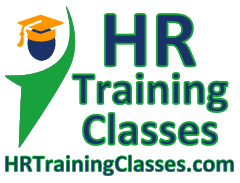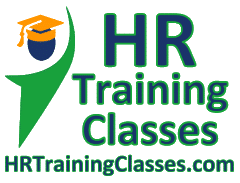HRCI – 15 HR(General) Credits
SHRM – 15 PDC’s
2-Day Diversity & Inclusion Certificate Program:
The Race to Disrupt Unconscious Bias in the Workplace
Everyone nowadays is talking about Diversity and Inclusion, about disrupting the unconscious bias that we all have and people ask, “why now, why now?”. Well, why not now? Why have we not done this before?
For the last 60 years, when Title VII of the Civil Rights Act was enacted, we have been trying to ensure that everyone is treated equally, but we are failing in some aspects. The coronavirus allowed us to be distracted from our everyday obligations and during the year 2020 as people were forced to lock up at home, plus the events following the death of George Floyd on May 25, many people questioned the unfairness of treating people differently, specifically examining people’s unconscious bias.
Whether it is equal pay, equal opportunities for people with disabilities, for veterans, respect for people’s religions, Black Lives Matter, marriage equality, Me Too movement, and the fact of having a vice president who is a woman, these things came all together. The years after 2020 have been some of the most significant years in a long time in which all different groups that felt inequality existed could voice their opinions and feelings on how they were being treated. What some of these movements are doing is fighting against unconscious bias. Nowadays, people can voice their opinions more than ever before due to technology, specifically social media. People don’t feel like they are alone anymore, and they know their voices are being heard.
Diversity and Inclusion training is not a new trend, rather a standard management practice critical in organizations today since it lays a solid foundation based on respect and welcoming of individuals’ differences. Diversity and Inclusion matters to every organization and every employee because with Diversity and Inclusion, an organization can develop a more cohesive, collaborative, innovative, creative work environment that can drive continued success and growth to the company.
Additionally, Diversity and Inclusion:
- Is simply the right thing to do
- Attracts high potential talent
- Promotes workplace sensitivity
- Increases employee engagement
- Leads to more excellent employee retention
- Diverse views make for better decisions
- Protects business from liabilities
- Brings helpful change
- Brings profitability to the business
- Raises awareness on every one of unconscious bias
- Helps the organization connect with diverse markets
Why You Should Attend This Workshop
By joining in this comprehensive training program, “Diversity and Inclusion – The Race to Disrupt Unconcious Bias in the workplace”, you will understand the concrete ways that nowadays are needed to engage in respectful and positive workplace interactions while reducing discrimination and unconscious bias, stereotypes and prejudice based on gender, ethnicity, race, sexual orientation, age, religion, physical and mental ability, and socioeconomic status. In this training program, we will thoroughly cover how unconscious bias can affect workplace decisions in all areas, such as:
- Attracting and Recruiting Talent
- Interviewing and Hiring
- Engaging and Communicating
- Talent Review and Succession Planning
- Managing Performance and Career Advancement
This is a complete Certificate Training Program that will provide you and your organization the confidence of managing Diversity, Inclusion and Equity and will provide you all the knowledge and tools to maintain a compliant, positive, diverse and inclusive workplace. Join in the RACE!
Schedule
- Day 1 – 10:00 AM – 6:00 PM Eastern Time
- 15 Minute Break at 12:15 PM ET
- 1 Hour Lunch at 2:00 PM ET
- 15 Minute Break at 5:15 PM ET
- Day 2 – 10:00 AM – 6:00 PM Eastern Time
- 15 Minute Break at 12:15 PM ET
- 1 Hour Lunch at 2:00 PM ET
- 15 Minute Break at 5:15 PM ET
Topics Covered in this Certificate Program
- Why Now? Why not Now? Different Movements
- #metoo
- #blacklivesmatter
- #marriageequality
- #glassceiling
- What is Diversity & Inclusion
- Layers of Diversity
- Anita Rowe & Lee Gardenswartz 4 Layers of Diversity Model
- Personality
- Internal Dimensions
- External Dimension
- Organizational Dimensions
- Why is Diversity & Inclusion important in the workplace?
- Mitigate legal risks
- Encourages Positive Interaction & Employee Engagement
- Increase Human Capital
- Increase Employer of Choice
- Support Ongoing Recruitment/Retention
- Support Affirmative Action Plans
- Increase Productivity
- Decrease Group Think
- Increase Competitive Advantage and Innovation
- What is Discrimination and Harassment?
- History of Discrimination & Protection
- Union Anti-Discrimination Laws
- Unfair Labor Practices Prohibited by the NLRB
- Role of HR Managing the Relationship between Employers and Employees (Employee Relations)
- Expanding HR Department Roles
- Workplace Concerns with Violations of the Employment Laws with Protected Classes and More
- Race & Color
- TITLE VII of Civil Right (1964) & Amendment (1991)
- UGESP
- Racism & Systemic Racism
- Adverse/Disparate Treatment & Impact
- McDonnell Douglas Corp vs. Green (1973)
- Griggs vs. Duke Power (1971)
- Davis vs. Washington Police (1976)
- 4/5th Rule /% Rule
- Reliability & Validity
- BFOQ
- Reverse Discrimination
- Quotas vs. Goals
- National Origin & Religion
- TITLE VII & Amendment
- IRCA
- EEOC
- EEO-1
- I-9 Forms
- E-Verify
- Visas
- Image & Appearance – Balance with Brand & Safety
- Sex/Women
- Women’s Rights
- Equal Pay
- Comparable Worth
- Glass Ceiling
- Lilly Ledbetter vs. Goodyear Tire & Rubber Co.
- Pregnancy Discrimination Act (1978)
- PPACA
- Age
- Age Discrimination in Employment Act (ADEA) (1967)
- Older Workers Benefit Protection Act
- Managing multi-generation workforce (Baby Boomers – GEN Z)
- Values of each one
- Sexual Orientation
- Terminology (Sexual Orientation, Gender Identity, Gender Expression, Transgender, Gender Transition, Cross-Dresser)
- TITLE VII & Amendment
- Bostock vs. Clayton County
- Gender Equality/ LBGTQ+
- Dress Codes/Bathrooms
- How to handle Personnel Records/Health Benefits
- Disability
- Physical
- Americans with Disabilities Act (ADA) (1990)
- ADA Amendment (2009)
- Rehab Sec of the Rehabilitation Act (1973)
- Pseudofolliculitis Barbae
- Mental
- Disability Act & Amendment
- Emotional Support Pets
- EAP
- HIPPA
- PPACA
- Veterans
- Americans with Disabilities Act (ADA)
- Uniformed Services Employment and Reemployment Rights Act (USERRA)
- Vietnam Era Veterans’ Readjustment Assistance Act (1974)
- Wage Determinations
- Economic Status
- Wage Determinations
- Consumer Protection Legislation
- Other
- Sexual Harassment/Quid Pro Quo
- Faragher vs. Boca Raton
- Political
- Deformities
- Obesity
- Freedom of Speech at work
- Physical
- Conscious Bias (explicit) vs. Unconscious Bias (implicit)
- Counteracting Unconscious Bias
- Social Stereotypes
- Different Types Bias in the Workplace
- Similar To Me Bias
- First Impression Error
- Halo Effect
- Horn Effect
- Contrast Effect
- Non-Verbal Bias
- Cultural Noise Effect
- History
- Unconscious biases develop at an early age: biases emerge during middle childhood and appear to develop across childhood (Dore).
- Examples
- Fictitious resumes with White-sounding names sent to help-wanted ads were more likely to receive callbacks for interviews than resumes with African-American sounding names. Resumes with White-sounding names received% more callbacks for interviews (Bertrand & Mullainathan).
- P.A.U.S.E. Model for Unconscious Bias
- P-ay Attention to your Own Judgements and Assessments
- A-cknowledge your Assumptions, Reactions, and Interpretations
- U-nderstand other Perspectives, Positions, and Viewpoints
- S-eek for Empowering & Productive Techniques for Situation
- E-xamine & Execute your Options and Make a Decision
- Illegal/Unethical Practices
- Constructive Discharge
- Retaliation
- Coerced Retirement
- Best Practices for Development/Discipline
- Positive Approaches
- Progressive Discipline
- Equal Opportunity History
- Equal Pay Act
- Difference between EEOC & OFCCP
- Affirmative Action
- AA PLANS
- OFCCP
- Executive Order
- VEVRAA (1974)
- Sec of the Rehabilitation Act
- Who handles issues if not resolved at the workplace
- Journey of an EEOC Complaint
- Whistleblower Act
- Retaliation
- EEOC & OFCCP/OSHA/NLRB & FLRC /DOL
- Leading and Lagging Indicators when Issues are not being resolved
- Turnover Rate/Absenteeism/Exit Interviews/Lawsuits/Surveys
- Why is it important to resolve issues at the workplace
- What is the moral/correct thing to do
- Difference between Morality & Law
- Addressing Conflict/Investigating in a timely manner
- Assess Issue(s)
- Develop Plan
- Context (Positive Outcomes – Create Training)
- Find Balance
- Both Sides Equally Heard – Due Process
- Follow the Law
- Emotional Support Animal Employee vs. Allergic Employee
- Challenges in Fostering Diversity & Inclusion
- Communication
- Lack of Planning
- Resistance to Change
- Lack of Motivation
- How do we make the Change?
- 7 steps implantation process
- Anita Rowe & Lee Gardenswartz
- Kurt Lewin’s Change Theory
- Unfreeze, Change, Refreeze
- Creating a Balance
- Addressing Best Practices/Flexibility – Employee Handbook
- Anti-Discrimination Policies
- Dress Code Policies
- Hair & Grooming Policies (Hair Color/Tattoos/Piercings)
- Removing bias from evaluations, hiring, promotions
- Visible Career Ladders
- Flex Time
- Parental Leave (FMLA)
- Child Care
- Appropriate Health Care
- Participating in External Events
- Addressing Reasonable Accommodations & Undue Hardships
- Improve Employee Involvement/Engagement
- Gather information for interest (Pulse Surveys)
- Culture Committee – customized to the company
- Include workers of ALL levels
- Hire an expert if necessary
- Mentoring Programs Women and minorities
- History of Diversity Management
- Mid-1980’s
- Fostering an Ongoing D/I Climate Leadership
- It is NOT a “one size fits all” plan
- It is NOT about filling quotas
- It is about long term commitments and attitudes from top-down
- Environmental Scanning to identify internal/external trends, successes, obstacles
- What will tomorrow look like?
- Strategic Planning – SMART GOALS
- Ongoing and Maintained Training
- Series of workshops/training/events/celebrations
- Create space in Evaluations
- Leadership Commitment
- Sensitivity and Staying ahead with the Curve
- Diversity Plans should be Reviewed, Revised, Reassessed, & Reassured
- (Moran, Stueart, Morner, 2012)
- Increased Diversity/Inclusion + Culture of Belonging = Innovation and Organization Results
- Activities/Quizzes:
- Inclusion Activity
- How can HR increase Diversity with the Strategic role, Operational role and Administrative role – Activity
- Making some words Gender Neutral – Activity
- Sexual Gender Orientation – Quiz
- Who has a Disability – Activity
- Disability Etiquette – Quiz
- Veterans over the years – Activity
- Obesity and Gender – Activity
- Unconscious Bias – Activity
- Resolving Workplace Conflicts – Activity
- Ongoing and Maintaining Diversity and Inclusion – Activity
- How will YOU set the standard – Increase your Diversity Knowledge/Worksheet

